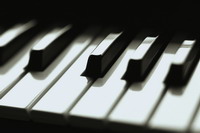Piano Sheets > Norman Gimbel Sheet Music > Girl From Ipanema - The (ver. 1) Piano Sheet
Girl From Ipanema - The (ver. 1) by Norman Gimbel - Piano Sheets and Free Sheet Music

About the Song
"The Girl from Ipanema" ("Garota de Ipanema") is a well-known bossa nova song, a worldwide hit in the mid-1960s that won a Grammy for Record of the Year in 1965. It was written in 1962, with music by Antonio Carlos Jobim and Portuguese lyrics by Vinicius de Moraes with English lyrics written later by Norman Gimbel. It was also famously sung and played by Jobim in 1965 on the Andy Williams show.
The first commercial recording was in 1962, by Pery Ribeiro. The version performed by Astrud Gilberto, along with João Gilberto and Stan Getz, from the 1963 album Getz/Gilberto, became an international hit, reaching #5 in the U.S., #29 in the UK, and charting highly throughout the world. Numerous recordings have been used in movies, sometimes as an elevator music cliché (for example, near the end of The Blues Brothers).
In 2004, it was one of 50 recordings chosen that year by the Library of.
Download this sheet!
About the Artist

Random article
Everything about piano sheet music Sheet music has a history of its own, dating back to the 19th century. In those days, musicians would play classic compositions using sheet music piano. Later on, when bands started performing, music sheets were back in vogue as a means to recreate these old compositions.
What is it?
Sheet music is nothing but a written notation of the piano notes. Depending on what musical composition the sheet music is for, the musical notes written will also differ. Most people have a wrong notion that it is only the popular compositions, which have recorded onto sheet music piano. However, several unfamiliar compositions have also been recorded using sheet music.
(More...)
